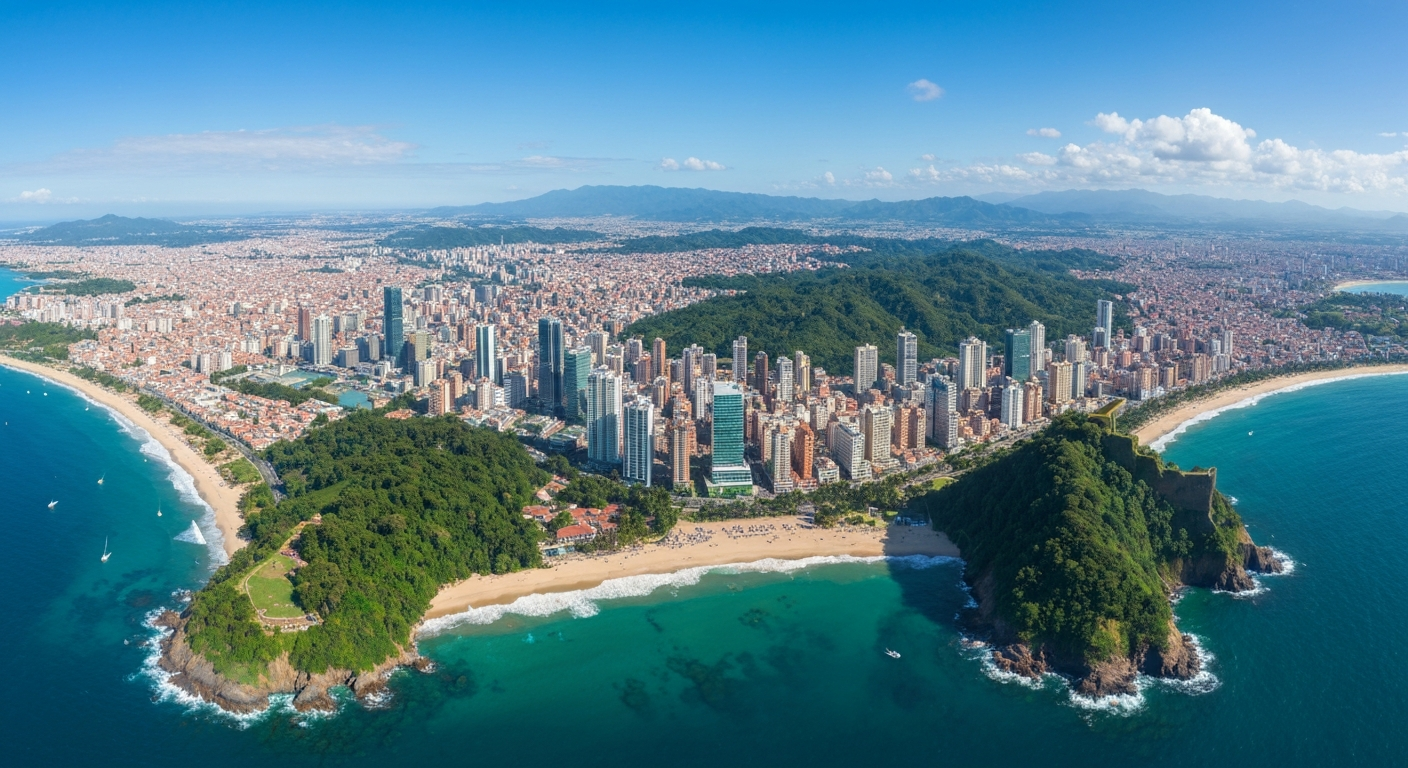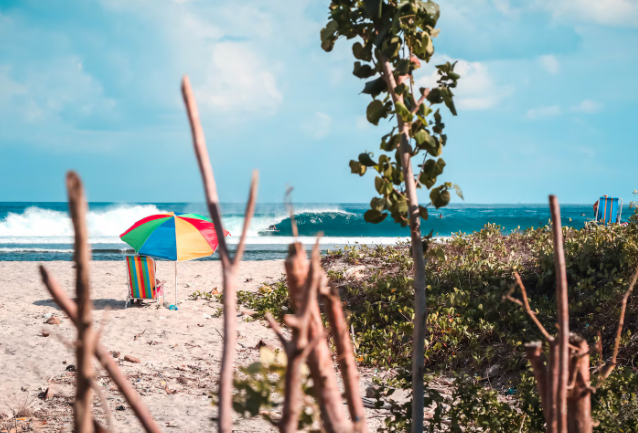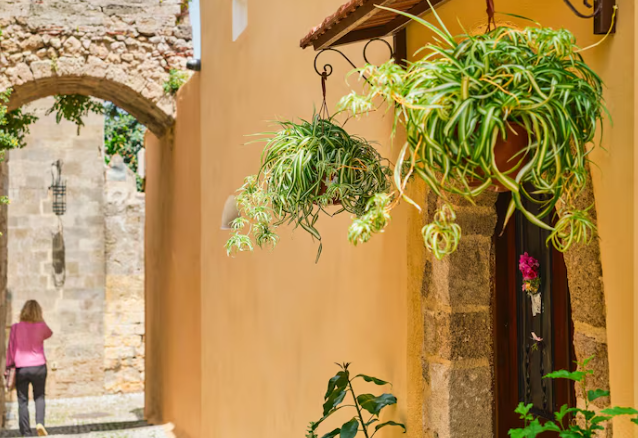November 1, 2025
Discover Colombia: A Comprehensive Travel GuideDiscover Colombia: A Comprehensive Travel Guide

Key Highlights
- Explore Colombia’s diverse landscapes, from the Caribbean coast to the Andes mountains and lush national parks.
- Discover vibrant cities like Bogotá and Medellín, famous for their innovation, history, and colorful street art.
- Visit charming colonial towns and some of the best places in South America, like Salento and Guatapé.
- Get your adventure fix by hiking to the Lost City or exploring the unique Cocora Valley.
- Understand the local culture through coffee tours, dance, and food with a local guide.
- Always be prepared with travel insurance to protect yourself against unexpected situations.
Introduction
Welcome to Colombia, a jewel of South America that has captured the hearts of travelers from all over the world. This country is a land of incredible contrasts, from sun-drenched Caribbean beaches to snow-capped Andean peaks and vibrant, bustling cities. In recent years, Colombia has transformed itself, shedding old stereotypes to become a top destination for adventure, culture, and relaxation. Your Colombia travel adventure is bound to be filled with unforgettable moments, so let's get started.
Colombia at a Glance: Key Facts for Travelers

The Republic of Colombia is a vast and diverse country, home to a significant population spread across its major cities and rural areas. Bogotá is the capital city and also its largest city, serving as a hub for culture and business. Other key urban centers include Medellín, Cali, and Cartagena, each offering a unique slice of Colombian life.
When planning your trip, remember that Colombia is much larger than it appears on a map. Traveling between the best places can take time, whether you're flying or taking a bus. To make the most of your visit, consider exploring one part of the country in depth rather than trying to see everything at once. We'll explore the geography, people, and languages that make this nation so fascinating.
Geography and Climate Overview
Colombia's geography is incredibly varied, making it one of the most biodiverse countries on the planet. The mighty Andes Mountains run through the country like a spine, creating stunning high-altitude landscapes, while the Sierra Nevada de Santa Marta mountain range rises dramatically from the Caribbean coast. This unique location gives Colombia coasts on both the Caribbean Sea and the Pacific Coast.
This diversity means the climate can change dramatically depending on where you are. You can experience everything from the tropical heat of the Caribbean to the cool, alpine tundra of the páramo ecosystems in the mountains. There are also unique landscapes like the Tatacoa Desert, which is technically a tropical dry forest with incredible red and gray rock formations.
Because of this variety, you can find a climate that suits your preferences any time of year. Whether you want to relax on a sunny beach, hike in cool mountains, or explore a jungle, Colombia offers an environment for every type of traveler.
Current Population and Demographics

Colombia is a populous nation, with its people distributed between bustling big cities and charming rural areas. The largest urban centers, like Bogotá and Medellín, are hubs of activity, commerce, and culture. Here, you'll find a fast-paced environment and a diverse mix of people from every part of Colombia.
In contrast, life in a small town offers a slower, more relaxed pace. These communities are where you can often get a more authentic feel for local life and traditions. Many travelers enjoy spending time in these quieter areas to connect with the culture on a deeper level.
While precise, up-to-the-minute population figures fluctuate, the distribution highlights the country's urban and rural character. A significant portion of the population resides in its major metropolitan areas.
Area Type
Population Concentration
Key Characteristics
Big Cities
High
Economic hubs, diverse culture, extensive infrastructure.
Small Towns
Low to Medium
Strong local traditions, agricultural focus, slower pace of life.
Rural Areas
Low
Connection to nature, home to indigenous communities.
Official Languages Spoken in Colombia

Spanish is the primary and official language of Colombia, spoken by the vast majority of the population. If you know some basic Spanish, you'll find it much easier to navigate, interact with locals, and enrich your travel experience. While English is spoken in major tourist areas and by some younger people, relying on it entirely can be limiting. Hiring a local guide can be a great way to bridge any language gap.
Beyond Spanish, Colombia is linguistically diverse. The country recognizes all ancestral languages of its indigenous communities as official in their respective territories. This reflects the nation's deep-rooted pre-colonial history and its respect for its native populations.
Some key points about languages in Colombia include:
- Spanish: The most widely spoken language across the country.
- Indigenous Languages: Over 60 different indigenous languages are spoken, particularly in rural and remote areas.
- Creole Languages: You may also encounter Creole languages on the Caribbean islands of San Andrés and Providencia.
This linguistic tapestry adds another layer to Colombia's rich cultural identity within Latin America.
Historical Highlights That Shaped Colombia
Colombia's history is a rich and complex story that you can see written in the architecture of its colonial towns and the spirit of its people. The country's past is marked by pre-Columbian civilizations, Spanish colonization, and a determined fight for independence. This deep colonial heritage is still visible today in cities with beautiful, well-preserved plazas and churches.
Understanding this history adds so much depth to your travels, from appreciating the significance of a historic building to understanding the cultural influences that make Colombia what it is today. In the sections ahead, we will look at the country's path to freedom and the diverse cultural threads that have been woven together over centuries.
Colombia’s Path to Independence

Colombia's journey to independence from Spanish rule was a defining period in its history. The struggle began in the early 19th century, fueled by a desire for self-governance and inspired by revolutions in other parts of the world, including the United States. This era was characterized by heroic figures and pivotal battles that are still celebrated today.
The declaration of independence was made on July 20, 1810, but securing it was a long and arduous process. The conflict continued for nearly a decade, culminating in the final victory that established the nation's sovereignty. This fight for freedom is a source of immense national pride.
When you walk through the old town of cities like Bogotá or Cartagena, you are treading on ground where these historical events unfolded. The monuments and squares are not just beautiful landmarks; they are powerful reminders of the country's determined spirit and its long road to becoming the nation it is today.
Cultural Influences Over the Centuries
Colombia's culture is a vibrant mosaic, shaped by a fascinating blend of cultural influences. Before the Spanish arrived, the land was home to diverse indigenous communities, each with unique traditions, languages, and beliefs. Their legacy continues to be a vital part of the national identity, with many of their customs still practiced today.
With the arrival of the Spanish in the 16th century, a new layer was added. Colonial rule brought the Spanish language, Catholicism, and a distinct style of architecture that you can still admire in the colonial buildings across the country. This European influence mixed with indigenous traditions, creating a unique hybrid culture.
Over time, African influences, brought through the transatlantic slave trade, also became deeply embedded in Colombia's music, dance, and cuisine, especially along the Caribbean coast. This fusion of indigenous, European, and African roots is what gives Colombia its unique and dynamic character in South America and Latin America as a whole.
The Colombian Flag and Its Meaning

The Colombian flag is a powerful national symbol you'll see flying proudly everywhere, from the historic center of a city to the entrance of its national parks. The flag consists of three horizontal stripes: a wide yellow stripe at the top, a blue stripe in the middle, and a red stripe at the bottom.
Each color holds a specific meaning that tells a story about the nation. The yellow stripe, which takes up the top half of the flag, represents the country's wealth and natural resources, like gold, as well as the sun and sovereignty.
The blue stripe symbolizes the two oceans that border Colombia, the Caribbean Sea and the Pacific Ocean, as well as its many rivers. Finally, the red stripe represents the blood shed by the heroes who fought for the country's independence. Together, these colors create a meaningful tribute to Colombia's geography, resources, and history.
Colombia’s Vibrant Urban Destinations
Colombia's major cities are buzzing with energy, innovation, and culture, making them some of the best places to visit. From the sprawling capital city of Bogotá to Medellín, the "City of Eternal Spring," each urban center offers a unique personality. You can explore bustling neighborhoods like El Poblado, admire world-class street art, and soak in the vibrant atmosphere.
Whether you're drawn to the historic charm of the city of Cartagena or the modern pulse of Medellín, you'll find endless things to see and do. Let's take a closer look at three of Colombia's most iconic cities and what makes each of them a must-visit destination for any traveler.
Medellín, Innovation and Lifestyle Move Opportunities

Medellín, once known for its troubled past, has undergone a remarkable transformation and is now celebrated for its innovation and vibrant energy. Known as the "City of Eternal Spring" for its pleasant year-round climate, it's one of the fastest-growing cities in Colombia and a favorite among tourists and expats. The city's spirit of progress is visible everywhere, from its modern public transport, including the famous cable car system, to its thriving arts scene.
Popular neighborhoods like El Poblado and Laureles are packed with cafes, restaurants, and nightlife, but it's worth venturing beyond these "gringoland" areas to get a true sense of local life. Medellín is a city that invites you to explore, with countless museums, parks, and markets to discover.
The city has become a hub for digital nomads and entrepreneurs, offering a great quality of life and opportunities. Its story of renewal makes it not just a place to visit, but a place to be inspired by.
Bogotá, Capital City Living
Bogotá, Colombia's high-altitude capital city, offers a raw and authentic urban experience. While it may not be as traditionally tourist-focused as other big cities, its unique edge and charm provide a genuine taste of Colombian life. The historic heart of the city, La Candelaria, is a must-see, with its cobblestone streets, colorful colonial buildings, and fascinating museums.
The city is a paradise for foodies, with an incredible gastronomic scene that ranges from street food stalls to cutting-edge restaurants. Bogotá is also famous for its vibrant street art, which turns many of its walls into open-air galleries. Taking a walking tour with a local guide is a fantastic way to uncover the stories behind the art and the city's history.
With a wealth of activities, from hiking in the nearby mountains to exploring its dynamic neighborhoods, Bogotá has a certain charm that grows on you. It's a city that rewards those who take the time to explore its many layers.
Cartagena Historic Seaside Charm

Cartagena is the crown jewel of Colombia's Caribbean coast, famous for its stunningly preserved Old Town. As one of the most visited destinations in the country, the city of Cartagena captivates travelers with its romantic atmosphere. Walking through its historic center, a UNESCO World Heritage site, feels like stepping back in time.
The city, which dates back to 1533, is a maze of cobbled alleys, balconies overflowing with flowers, and grand churches on picturesque plazas. While it can be crowded, its beauty is undeniable. The main attraction of Cartagena isn't a long list of tourist activities but rather the chance to slow down and soak in the ambiance.
Positioned on the Caribbean Sea, Cartagena is the perfect place to relax, wander without a plan, and indulge in some of the country's best food. Its unique blend of history, culture, and seaside location makes it an unforgettable destination.
Nature and Adventure Hotspots
Beyond its bustling cities, Colombia is a paradise for nature lovers and adventure seekers. The country's diverse geography, from the Andes Mountains to the Caribbean coast, offers a stunning array of landscapes to explore. You can hike through lush jungles in Tayrona National Park, marvel at the towering palms of the Cocora Valley, or venture to the remote desert of La Guajira.
These national parks and natural wonders are a great place to connect with the outdoors and experience Colombia's incredible biodiversity. Let's explore some of the top spots for hiking, diving, and simply relaxing in nature.
Tayrona National Park, Beaches & Biodiversity

Nestled on the Caribbean coast at the foot of the Sierra Nevada de Santa Marta mountains, Tayrona National Park is a breathtaking mix of jungle and sea. The park boasts some of Colombia's most beautiful golden-sand beaches, fringed with coconut palms and backed by dense rainforest. It's a sanctuary of biodiversity, where you can spot monkeys and countless bird species.
The park offers numerous easy day hikes, with trails leading you to stunning viewpoints and secluded beaches like the iconic Cabo San Juan. You can also go horse riding, diving, or simply relax in a hammock and enjoy the scenery. Many visitors choose to stay overnight at one of the campsites to fully experience the park's magic after the day-trippers have left.
To avoid the biggest crowds, try to plan your visit outside of Colombian public holidays and weekends. A trip to Tayrona is an essential experience for anyone looking to connect with nature on the Caribbean coast.
Cocora Valley Hiking and Unique Scenery
The Cocora Valley is one of Colombia's most surreal and beautiful landscapes, famous for being home to the Quindío wax palm, the country's national tree. These incredible palm trees can grow up to 200 feet tall, creating a truly unique and dramatic skyline. Hiking here is one of the most popular activities in the country.
The main hiking loop takes about five hours and leads you through lush forests, across jungle rivers, and up to viewpoints offering stellar panoramas of the valley. Along the way, you can even visit a hummingbird sanctuary. The sight of the towering wax palms emerging from the mist is an unforgettable image.
Located near the town of Salento, the Cocora Valley is easily accessible and can be explored independently or with a guided trek. It's a must-do for anyone who loves hiking and wants to witness a landscape unlike any other in the world.
San Andrés & Providencia Islands, Diving and Relaxation

For a true Caribbean paradise, head to the islands of San Andrés and Providencia. Located far off the mainland in the Caribbean Sea, these islands are considered some of the most unspoiled in the region. You'll find classic white-sand beaches, crystal-clear turquoise waters, and a laid-back atmosphere perfect for relaxation.
Providencia, in particular, is the heart of a massive UNESCO Biosphere Reserve that covers 10% of the Caribbean Sea and boasts incredible marine biodiversity. This makes it a world-class destination for snorkeling and scuba diving, with vibrant coral reefs teeming with life. Unlike the nearby Rosario Islands, these islands have managed to avoid overdevelopment.
Because non-natives cannot own property here, the islands have retained their authentic charm. If you're looking for a place to truly disconnect, dive into pristine waters, and enjoy a slower pace of life, San Andrés and Providencia are the perfect escape.
Off-the-Beaten-Path Towns and Experiences
While Colombia's major cities and national parks are incredible, some of its greatest treasures are found off the beaten path. The country is dotted with charming colonial towns and unique small town communities where you can experience a more authentic side of Colombian life. These places are a great place to slow down, wander through colorful streets, and connect with locals.
Hiring a local guide can unlock even more hidden gems in these areas. Let's explore a few of these picturesque towns that offer everything from stunning views and coffee culture to perfectly preserved colonial heritage.
Guatapé, Colorful Streets and Lakeside Views

Guatapé is arguably one of the most picturesque towns in all of Colombia, and certainly one of the most colorful in the world. What makes it so unique are the zócalos, brightly painted murals on the lower half of the homes that depict animals, people, and geometric shapes. Simply sitting in a vibrant plaza, sipping coffee, and watching local life unfold is a joy in itself.
The town's other main attraction is the monolithic Rock of Guatapé, or La Piedra. Visitors can climb the steep, 740-step staircase to the top for one of the most breathtaking lakeside views in the country. The panoramic vista of the man-made reservoir with its many islands is truly spectacular.
While many people visit Guatapé as a day trip from Medellín, it's worth spending at least one night. This allows you to enjoy the town's charm after the crowds have left and fully appreciate its unique beauty and tranquil atmosphere.
Salento, Coffee Culture and Countryside
Nestled in the heart of the Zona Cafetera, or coffee region, Salento is a magnet for travelers. This charming town is surrounded by lush green mountains and countless coffee farms. The town itself is a delight, with vibrantly painted houses and stunning viewpoints that offer magical sunsets over the countryside.
Salento serves as the primary base for two of Colombia's most famous activities: visiting coffee plantations and hiking the Cocora Valley. You can take a tour of a local coffee farm to learn about the entire process from bean to cup, complete with tastings of different varieties. This is a must-do cultural experience.
While there isn't a lot to do within the town itself, that's part of its appeal. Salento is the perfect place to spend a few days relaxing, reading a book, and soaking in the tranquil atmosphere of Colombia's beautiful coffee country.
Barichara & Villa de Leyva, Colonial Heritage

For a deep dive into Colombia's colonial heritage, the towns of Barichara and Villa de Leyva are unparalleled. Barichara is often called the prettiest town in Colombia, with its perfectly preserved cobblestone streets and whitewashed houses with red-tiled roofs. It's a tranquil place where you can wander for hours, and hiking the historic El Camino Real trail to the nearby village of Guane is a highlight.
Villa de Leyva is another stunningly preserved colonial town, located just a few hours from Bogotá. Its centerpiece is the massive Plaza Mayor, one of the largest town squares in the Americas. The town's architecture hasn't changed much since the 16th century, giving you the feeling of stepping back in time.
Both towns are beloved by locals and tourists alike for their beauty and slow pace of life. Exploring these colonial buildings and soaking in the historic atmosphere offers a peaceful contrast to the hustle of Colombia's big cities.
Understanding Lifestyle and Entrepreneurship in Colombia
Are you thinking about more than just a vacation? Colombia is increasingly attracting people looking to make a lifestyle move, thanks to its affordable cost of living and growing opportunities for entrepreneurship. The country offers a vibrant environment for starting a business and a rich culture for experiencing local life.
However, moving to a new country involves careful planning. It's important to understand the business culture, the real cost of living, and how to manage your finances. Let's look at what it takes to thrive in Colombia, whether you're an entrepreneur or simply seeking a new way of life.
Starting a Business and Entrepreneurial Culture

Colombia is fostering a dynamic culture of entrepreneurship, particularly in cities like Medellín, which have become hubs for innovation and startups. The government is actively encouraging new business ventures, making it an attractive place for both local and foreign entrepreneurs. If you're considering starting a business, you'll find a supportive and growing ecosystem.
The key to success is understanding the local market and navigating the administrative processes. This involves everything from registering your business to understanding labor laws. Networking is also crucial, so connecting with other entrepreneurs and business organizations can provide valuable insights and support.
Before you make any big moves, do thorough research. Reach out to local business advisors or expat communities online. Often, a simple inquiry to the right email address can provide you with the essential information you need to get started on your entrepreneurial journey in Colombia.
Making a Lifestyle Move: Cost of Living Insights
One of the biggest draws for those considering a lifestyle move to Colombia is the affordable cost of living. Compared to North America or Europe, your money can go much further here, allowing for a high quality of life on a modest budget. However, costs can vary significantly depending on your location and lifestyle.
Living in the city center of big cities like Bogotá or Medellín will naturally be more expensive than living in a small town or a less central neighborhood. The best places for you will depend on your priorities, whether you seek the excitement of urban life or the tranquility of a smaller community.
When budgeting, consider expenses like housing, food, transportation, and healthcare. While daily costs are generally low, it's wise to have a clear financial plan. Researching specific costs in your desired location will give you a realistic picture of what to expect and help you make a smooth transition.
Avoiding Financial Traps: Money Tips for Canadians

Traveling or moving to Colombia requires some financial savvy to avoid common traps. One of the most important money tips is to always be aware of your surroundings, as petty theft can be common. It's also wise to have a mix of payment methods, including cash for smaller purchases and cards for larger ones.
When exchanging or withdrawing money, use official banks or ATMs to get the best exchange rates and avoid scams. Be cautious of "helpful" strangers at ATMs. Compared to the United States, many things will seem cheaper, but it's still important to budget wisely and track your spending.
Here are a few key tips to keep in mind:
- Get Travel Insurance: This is non-negotiable. Travel insurance protects you from theft, medical emergencies, and cancellations. It's a small investment for huge peace of mind.
- Inform Your Bank: Let your bank know about your travel plans to avoid having your cards blocked for suspicious activity.
- Carry Small Bills: Having small denominations of the local currency is useful for taxis, street food, and small shops.
Residency, Tax Haven Potential, and Worldwide Income Tax
For those planning a long-term stay, understanding Colombia's residency and tax laws is crucial. The country offers several residency options for foreigners, but navigating the legal requirements can be complex. It's important to do your homework to ensure you meet all the necessary criteria.
While some may be curious about Colombia's potential as a tax haven, it's essential to understand the reality of its tax system. Colombia taxes its residents on their worldwide income, which is a key factor to consider. Let's explore the specifics of residency and what the tax laws really mean for you.
Residency Options and Legal Requirements

Securing residency in Colombia involves choosing the right visa for your situation and meeting all the legal requirements. The country offers various types of visas, including those for retirees, investors, and professionals. Each visa has specific criteria, such as proof of income or investment, that you must fulfill.
The application process can be detailed and requires careful preparation of documents. It's highly recommended to consult with an immigration lawyer or a specialized agency to guide you through the process. They can help ensure your application is complete and correct, saving you time and potential headaches.
Here are some general steps you'll likely need to take:
- Determine the appropriate visa category for your circumstances.
- Gather all required documents, which may include financial statements, background checks, and proof of health insurance.
- Submit your application through the official channels and be prepared for follow-up interviews or requests.
Starting this process early and getting professional advice are two of the best money tips for a smooth transition to living in a new part of the country.
Colombia’s Taxes: Worldwide Income vs. Tax Haven Realities

While Colombia offers an attractive lifestyle, it is not a traditional tax haven. A key aspect of the country's tax system is that residents are typically taxed on their worldwide income. This means that if you become a tax resident, you must declare and potentially pay taxes on income earned both inside and outside of Colombia.
The legal requirements for tax residency are based on the amount of time you spend in the country within a fiscal year. Once you cross that threshold, you are subject to Colombian tax laws. Understanding these rules is critical for financial planning and avoiding legal issues.
It's important to consult with a tax professional who understands both Colombian and your home country's tax laws to ensure you are compliant. Here is a simplified overview of how income tax might be structured for residents.
Income Bracket (Illustrative)
Tax Rate (Illustrative)
Low Income
Progressive rates starting from 0%
Middle Income
Progressive rates up to 28%
High Income
Progressive rates up to 39%
Conclusion
Colombia is a destination bursting with vibrant culture, stunning landscapes, and rich history. From the colorful streets of Guatapé to the breathtaking views in Cocora Valley, this country offers something for every type of traveler. Understanding its diverse urban destinations, nature hotspots, and unique lifestyle can make your journey even more rewarding. Whether you're planning a short visit or considering a longer stay, Colombia welcomes you with open arms and endless opportunities for adventure. Don't miss out on exploring what this beautiful nation has to offer. Ready to plan your Colombian getaway? Get in touch with us for personalized travel advice and recommendations!
Frequently Asked Questions
How safe is Colombia for tourists right now?
Colombia is much safer for tourists now than in the past, but it's important to stay vigilant. Petty theft is common, especially in big cities. Always be aware of your surroundings, watch your valuables, and avoid walking alone at night in certain areas. Getting comprehensive travel insurance is highly recommended for peace of mind.
What advice do you have for first-time travelers to Colombia?
For first-time travelers, don't try to see everything at once. Colombia is huge, so focus on one or two regions. Embrace the local life, try the food, and learn a few Spanish phrases. Always have travel insurance, and be open to both the popular spots and the hidden gems you'll find along the way.
What are some must-try Colombian cultural experiences?
You must take a tour of a coffee farm in the Zona Cafetera to understand the bean-to-cup process. Explore the vibrant street art in Bogotá or Medellín, wander the historic Old Town of Cartagena, and try to learn about the local indigenous communities. And of course, don't miss out on learning to dance salsa in Cali
Follow The Jerz Way
02
Action Plan & Document Collection
We create a tailored action plan aligned with your chosen service(s). This stage includes gathering required documents and handling essential tasks such as translations, apostilles, and genealogical research.
